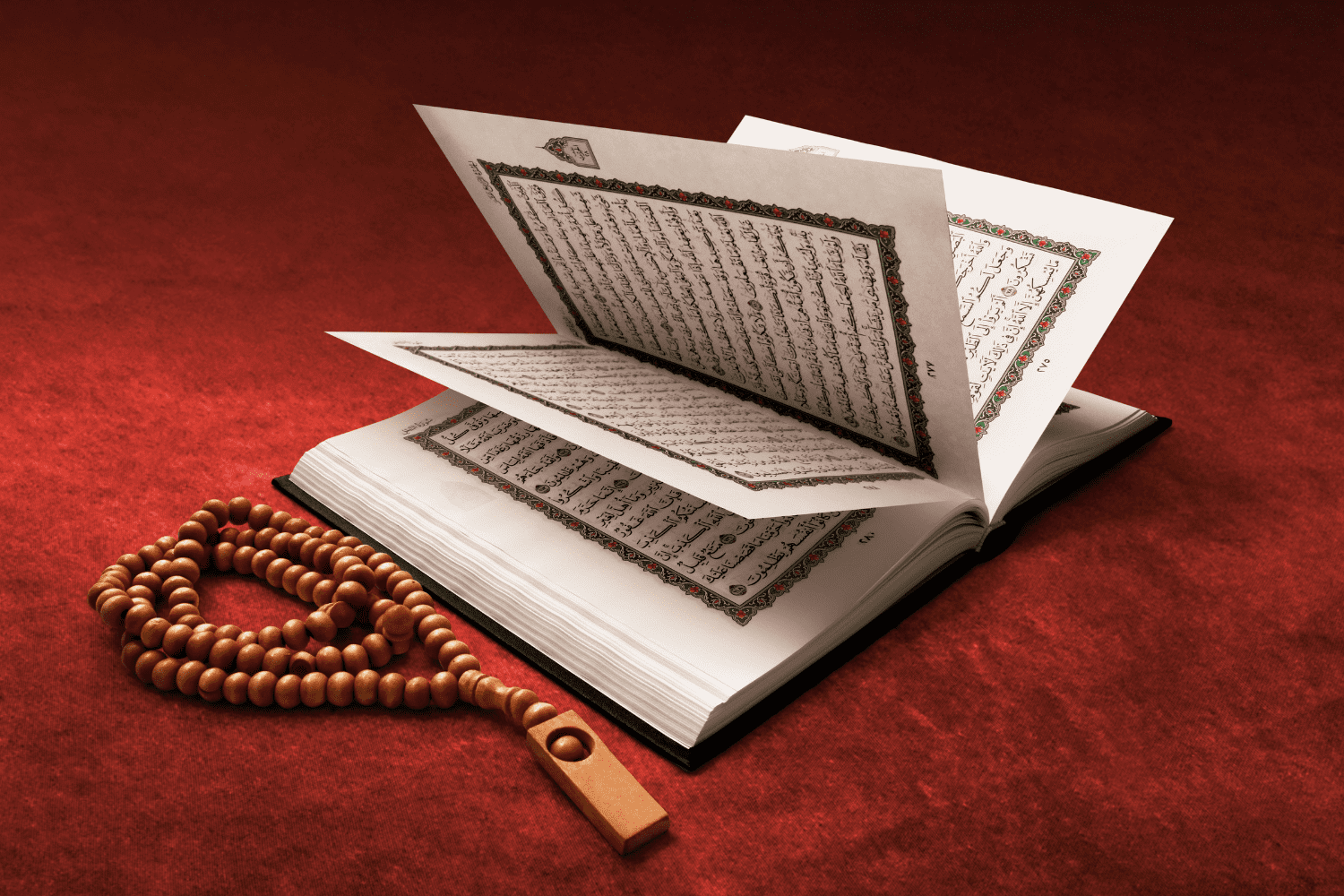The History and Compilation of the Quran

Compilation of the Quran
The Quran, the holy scripture of Islam, is revered by over a billion Muslims worldwide as the literal word of God as revealed to the Prophet Muhammad. Its eloquence, guidance, and depth have captivated believers for centuries, serving as the foundation of Islamic faith, law, and ethics. However, the history and compilation of the Quran are subjects of scholarly inquiry and debate, shedding light on its evolution and preservation over time. This article aims to explore the fascinating journey of the Quran, from its inception in 7th-century Arabia to its present form, navigating through historical events, methodologies of compilation, and preservation efforts.
Click here to listen
Pre-Islamic Arabia: Context and Oral Tradition
To understand the origins of the Quran, we must delve into the socio-political and cultural landscape of pre-Islamic Arabia. In the centuries preceding the advent of Islam, the Arabian Peninsula was characterized by tribal divisions, polytheistic beliefs, and a rich tradition of oral poetry and storytelling. Poetry held significant cultural importance, serving as a means of communication, entertainment, and historical record. It was within this milieu that the Quranic revelation occurred.
The Prophet Muhammad and the Quranic Revelation
The story of the Quran begins with the Prophet Muhammad, who was born in the city of Mecca around 570 CE. At the age of 40, Muhammad experienced a profound spiritual encounter while meditating in the Cave of Hira, where the angel Gabriel appeared to him and conveyed the first verses of what would later become the Quran. Over the course of 23 years, Muhammad continued to receive divine revelations, which were memorized by his followers and eventually compiled into the Quranic text.
Oral Transmission and Memorization
Central to the preservation of the Quran is the tradition of oral transmission and memorization. In the early Islamic community, literacy rates were relatively low, and writing materials were scarce. As a result, the Quran was primarily transmitted orally, with companions of the Prophet memorizing verses and reciting them in congregational prayers and gatherings. This oral tradition ensured the preservation of the Quranic text and its accurate transmission from one generation to the next.
Compilation during the Prophet’s Lifetime
During the lifetime of the Prophet Muhammad, the Quranic revelations were not compiled into a single written manuscript. Instead, the verses were recorded on various materials, including parchment, bones, and palm leaves. The Prophet himself dictated the placement of each verse within its respective chapter (Surah) and ensured the accuracy of the text through his companions. However, the Quranic compilation in its entirety occurred after Muhammad’s death during the caliphate of Abu Bakr, the first successor to the Prophet.
Compilation under Abu Bakr and Uthman
Following the death of the Prophet Muhammad in 632 CE, Abu Bakr assumed leadership as the first caliph (successor) of Islam. In response to the Battle of Yamama, which resulted in the death of many memorizers of the Quran, Abu Bakr initiated the compilation of the Quranic text into a single manuscript. He entrusted the task to Zayd ibn Thabit, a scribe who had extensive knowledge of the Quran and its recitation. Zayd’s compilation, known as the “Uthmanic Codex,” became the standard text of the Quran and was distributed to various regions of the Islamic empire.
The compilation process continued during the caliphate of Uthman ibn Affan, the third caliph, who ruled from 644 to 656 CE. Concerned about discrepancies in recitation due to dialectical variations, Uthman commissioned a standardized version of the Quran based on the Uthmanic Codex. Copies of this standardized text were sent to different provinces, and all other Quranic manuscripts were ordered to be destroyed. This monumental effort ensured the uniformity and preservation of the Quran across the Islamic world.
The Role of Companions and Scribes
The compilation of the Quran relied heavily on the contributions of the Prophet Muhammad’s companions and scribes. These individuals, known as the “Sahaba,” played a crucial role in preserving the Quranic text through their meticulous memorization, transcription, and verification of verses. Among them, notable figures such as Abu Bakr, Umar ibn al-Khattab, Uthman ibn Affan, and Ali ibn Abi Talib made significant contributions to the preservation and dissemination of the Quranic message.
Challenges and Criticism
Despite efforts to preserve the Quran, challenges and criticisms have emerged throughout history. Some non-Muslim scholars have raised questions regarding the reliability of the Quranic text, citing alleged discrepancies, textual variations, and historical inconsistencies. Additionally, debates have arisen regarding the dating of certain Quranic manuscripts and the extent of textual changes over time. However, Muslim scholars and theologians have staunchly defended the integrity and authenticity of the Quran, arguing that it remains unchanged since its revelation over fourteen centuries ago.
Quranic Manuscripts and Scripts
Over the centuries, numerous Quranic manuscripts and scripts have been produced, reflecting the diverse artistic styles, calligraphic traditions, and regional variations of the Islamic world. From the early Kufic script to the more ornate Naskh and Thuluth styles, Quranic calligraphy has evolved as a form of artistic expression and devotion. Some of the most renowned Quranic manuscripts include the “Mushaf of Uthman,” the “Topkapi Manuscript,” and the “Samarqand Manuscript,” each valued for its historical significance and aesthetic beauty.
Modern Methods of Preservation and Study
In the digital age, modern methods of preservation and study have revolutionized access to the Quranic text. Digital repositories, online databases, and digitization projects have made Quranic manuscripts accessible to scholars and researchers worldwide, facilitating textual analysis, comparative studies, and linguistic research. Additionally, advancements in computer technology and artificial intelligence have led to the development of digital tools and software for Quranic recitation, memorization, and translation.
The impact of the Quran
The impact of the Quran extends far beyond the realm of religious belief, shaping the course of history, culture, and civilization. Since its revelation over fourteen centuries ago, the Quran has left an indelible mark on societies and individuals worldwide, influencing their beliefs, values, and behavior. Here, we explore some of the key aspects of the Quran’s impact on various facets of human life:
- Spiritual and Moral Guidance:
At its core, the Quran serves as a comprehensive guidebook for living a righteous and fulfilling life. Its verses offer moral teachings, ethical principles, and spiritual insights that resonate with believers across different cultures and epochs. The Quranic emphasis on virtues such as justice, compassion, humility, and charity has inspired countless individuals to strive for personal excellence and social harmony. - Social and Legal Framework:
The Quran not only provides spiritual guidance but also lays the foundation for a just and equitable society. Its teachings on social justice, human rights, and the rule of law have informed the development of Islamic legal systems and governance structures. Concepts such as zakat (charitable giving), sadaqah (voluntary charity), and amanah (trustworthiness) have shaped Islamic economics, philanthropy, and business ethics. - Cultural and Artistic Expression:
The Quran has been a source of inspiration for artists, poets, and calligraphers throughout history. Its eloquent language, rhythmic prose, and profound symbolism have influenced the development of Islamic art, literature, and architecture. Quranic verses adorn the walls of mosques, palaces, and manuscripts, showcasing the intricate beauty of Islamic calligraphy and ornamentation. - Intellectual and Scientific Inquiry:
Contrary to popular misconceptions, the Quran encourages the pursuit of knowledge and rational inquiry. Its verses exhort believers to reflect upon the natural world, seek wisdom, and engage in intellectual discourse. Many Muslim scholars and scientists have drawn inspiration from the Quran in their quest for scientific understanding, contributing to advancements in fields such as astronomy, mathematics, medicine, and philosophy. - Interfaith Dialogue and Understanding:
The Quran emphasizes the importance of dialogue, tolerance, and coexistence among people of different faiths and backgrounds. Its verses recognize the diversity of human cultures and religions, calling upon believers to engage in respectful discourse and peaceful coexistence. The Quranic notion of “people of the book” (ahl al-kitab) acknowledges the shared heritage of Judaism, Christianity, and Islam, fostering interfaith dialogue and cooperation. - Global Influence and Legacy:
From the Arabian Peninsula to every corner of the globe, the Quran has exerted a profound influence on diverse societies and civilizations. Its message of monotheism, social justice, and moral rectitude has transcended linguistic, cultural, and geographical boundaries, shaping the collective conscience of humanity. The Quran’s enduring legacy continues to resonate with millions of Muslims worldwide, guiding their personal lives, community interactions, and societal aspirations.
In conclusion, the impact of the Quran is multifaceted and far-reaching, touching every aspect of human existence. As a source of spiritual guidance, moral wisdom, and cultural inspiration, the Quran has empowered individuals and communities to strive for excellence, pursue justice, and foster peace. Its timeless message continues to illuminate the path of humanity, offering solace, guidance, and hope in an ever-changing world.
- Quranic Manuscripts:
Over the centuries, numerous Quranic manuscripts have been discovered, providing valuable insights into the history and development of the Quran. These manuscripts date back to the early Islamic period and contain variations in spelling and pronunciation, reflecting the diversity of the Arabic language at the time. Scholars and researchers study these manuscripts to gain a deeper understanding of the Quran’s textual history.
- Translations of the Quran:
As Islam spread to different regions, the need for translations of the Quran arose to make the text accessible to non-Arabic speakers. Translations of the Quran into various languages began to appear, allowing people from different backgrounds to study and understand its teachings. However, it is important to note that translations are not considered the Quran itself, but rather interpretations of its meanings.
- The Quran in Modern Times:
Today, the Quran is available in printed form and digital formats, making it easily accessible to millions of Muslims around the world. It continues to be recited, studied, and revered as the ultimate source of guidance for Muslims. The Quranic teachings guide Muslims in matters of faith, morality, and daily life, serving as a source of inspiration and spiritual nourishment.
Conclusion:
The history and compilation of the Quran stand as a testament to the enduring legacy of Islam’s sacred scripture. From its humble beginnings in 7th-century Arabia to its global dissemination in the modern era, the Quran has served as a source of guidance, inspiration, and spiritual nourishment for countless believers. Through the dedication of the Prophet Muhammad, his companions, and subsequent generations of Muslims, the Quranic text has been meticulously preserved, ensuring its eternal relevance and significance for humanity. As we continue to unravel the mysteries of the Quran, we are reminded of its timeless message of faith, compassion, and divine guidance, transcending the boundaries of time and space.
In summary, the compilation of the Quran involved multiple stages, from its oral transmission during the Prophet Muhammad’s lifetime to the standardized version commissioned by Caliph Uthman. Through the efforts of the Prophet’s companions and subsequent generations of Muslims, the Quranic text was meticulously preserved and transmitted, ensuring its authenticity and continuity over the centuries.
Click here for more blogs
Recent Posts
- Importance Of Quran From Hadiths
- Tajweed Of Quran
- How To Learn Online Quran
- How To Memorize The Quran
- Quranic guidance
- Quranic studies
- Surah Al-Fatihah :Explore The Meaning and Interpretation
- The Scientific Miracles of the Quran
- The History and Compilation of the Quran
- New Mini Kids Spring Summer Editorial









